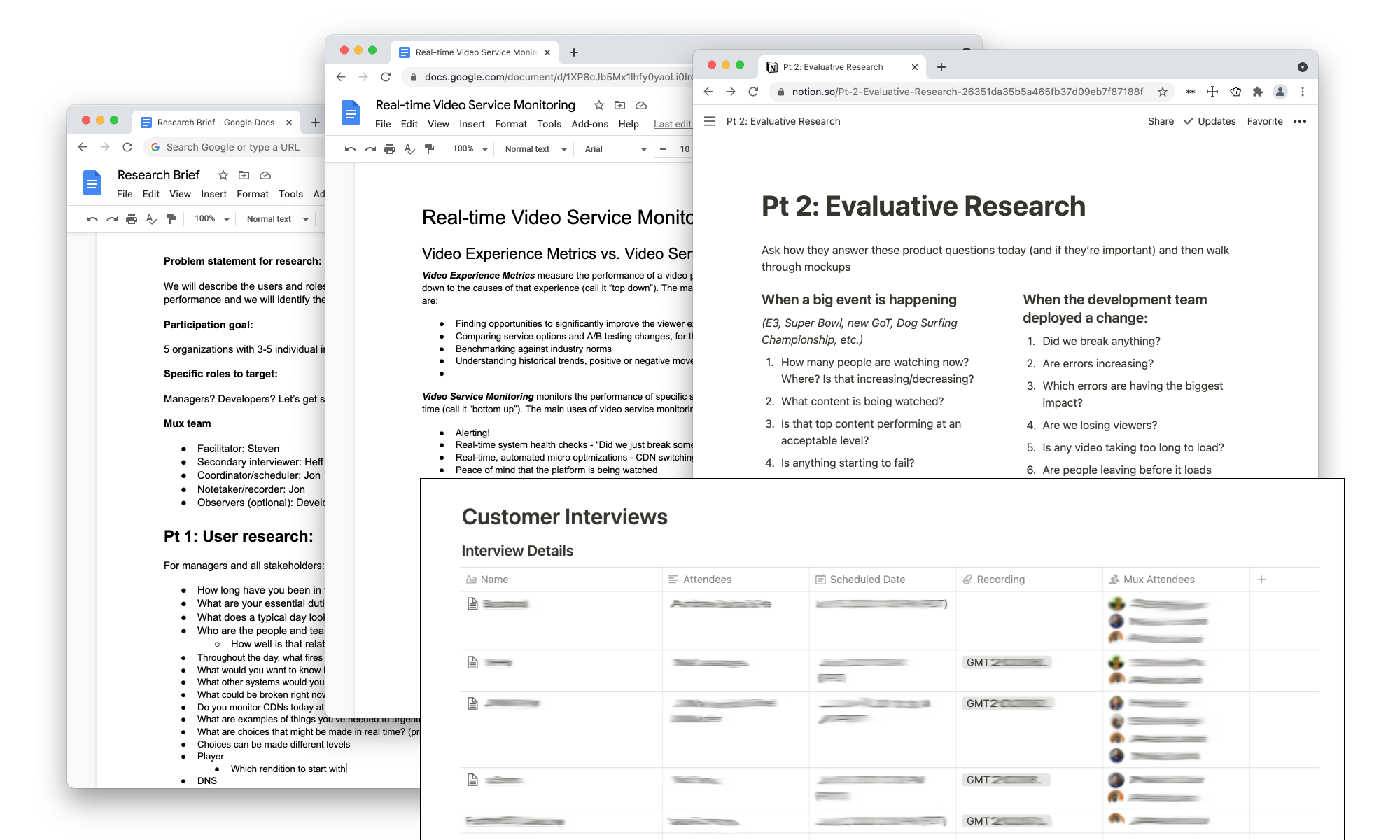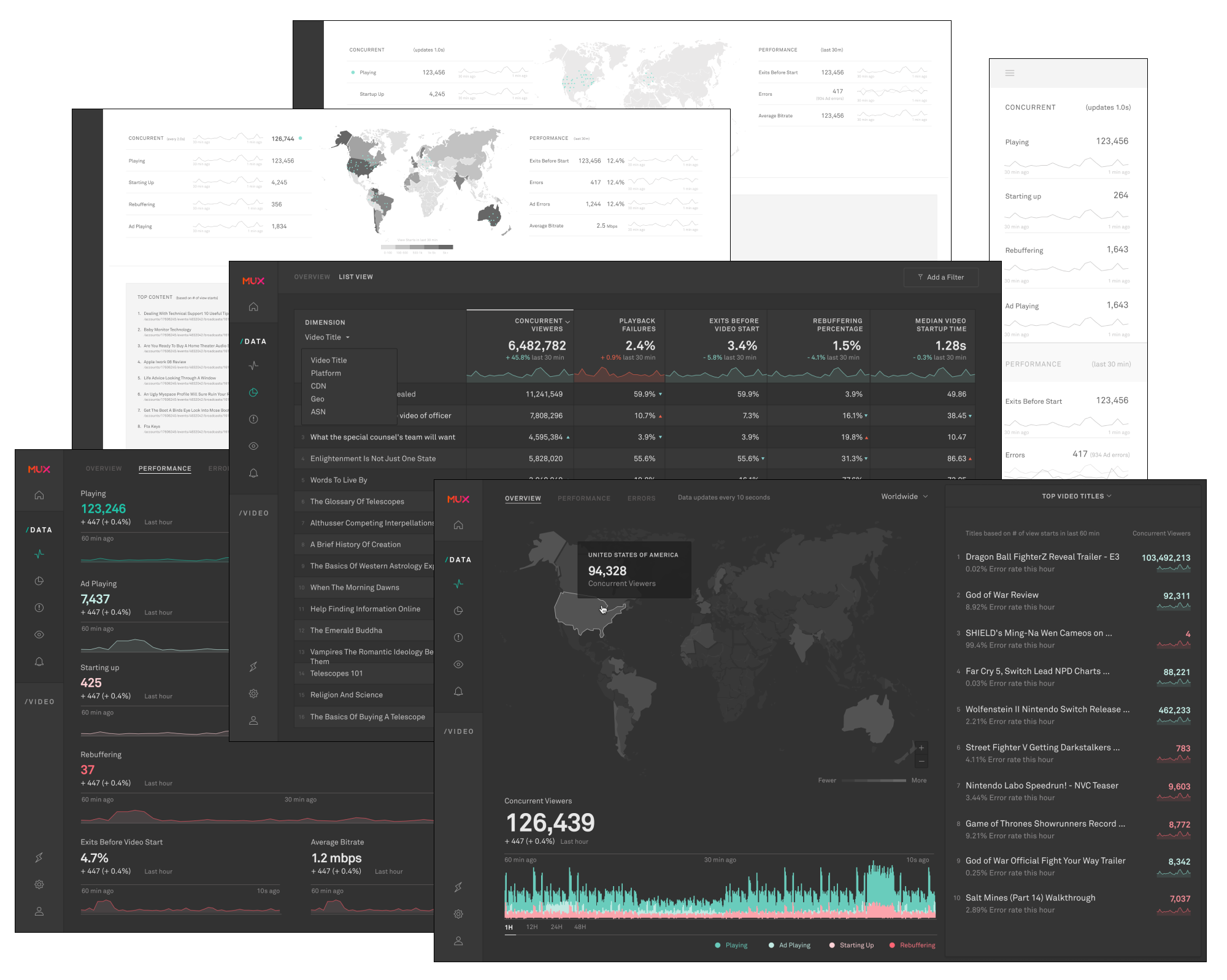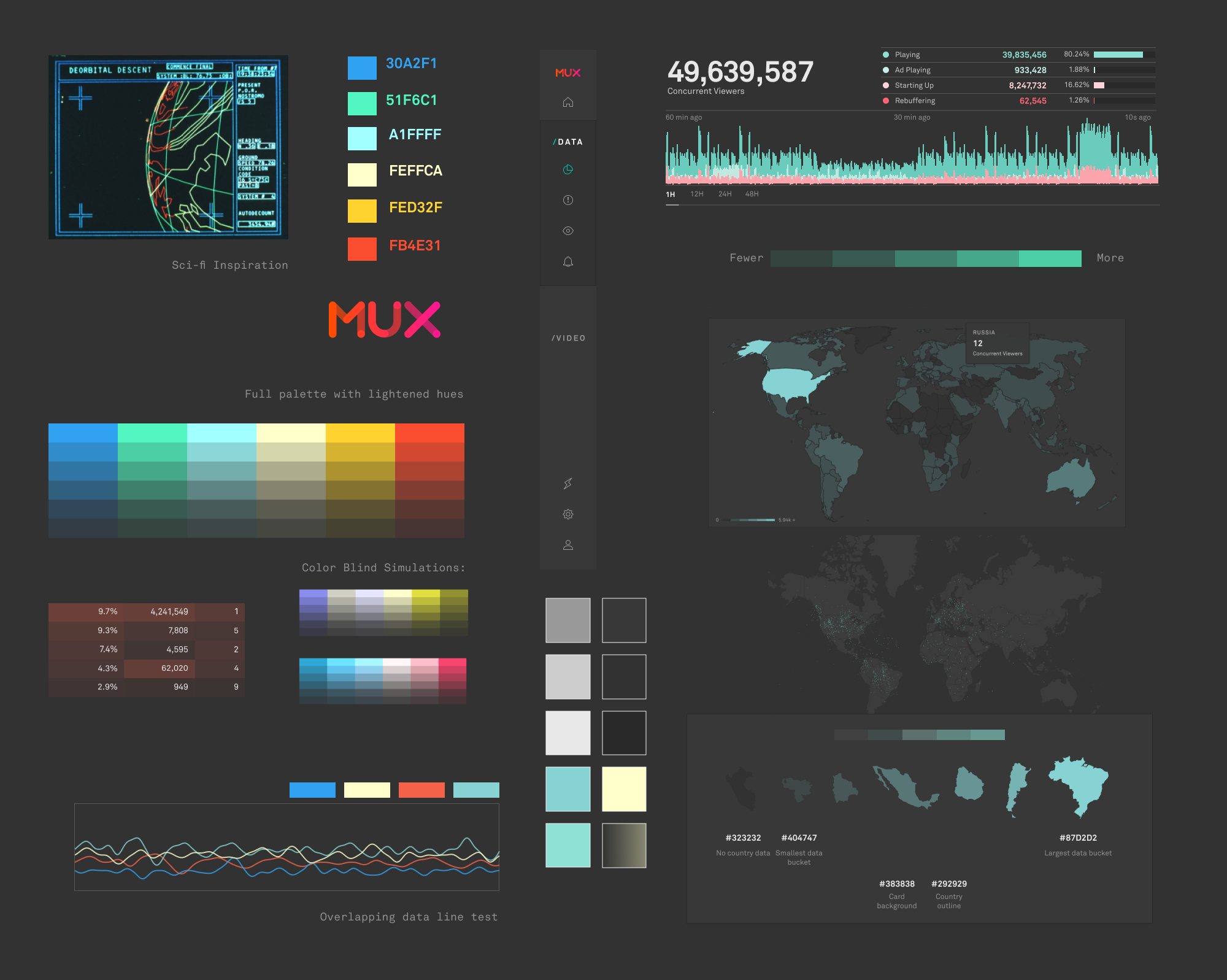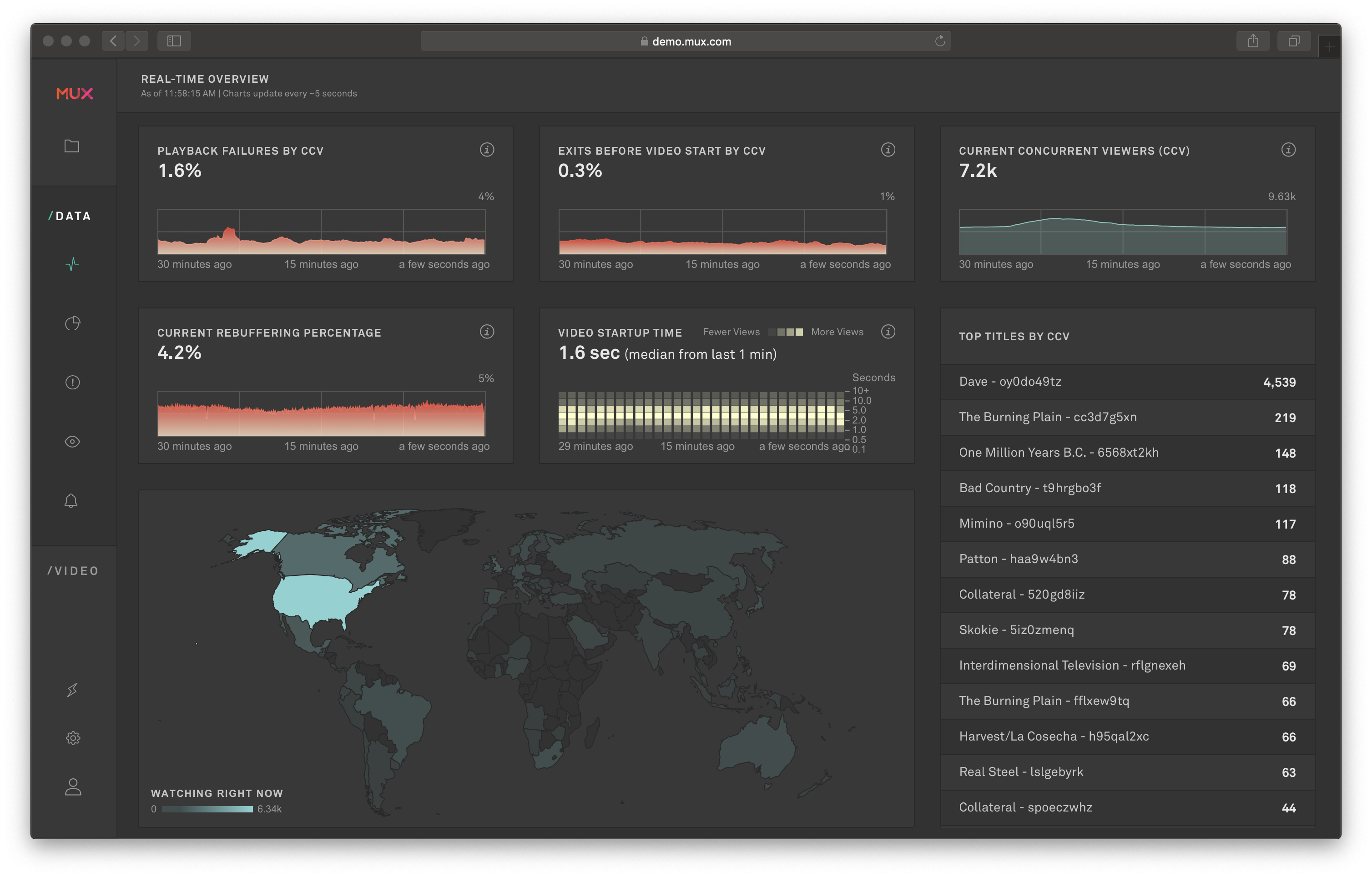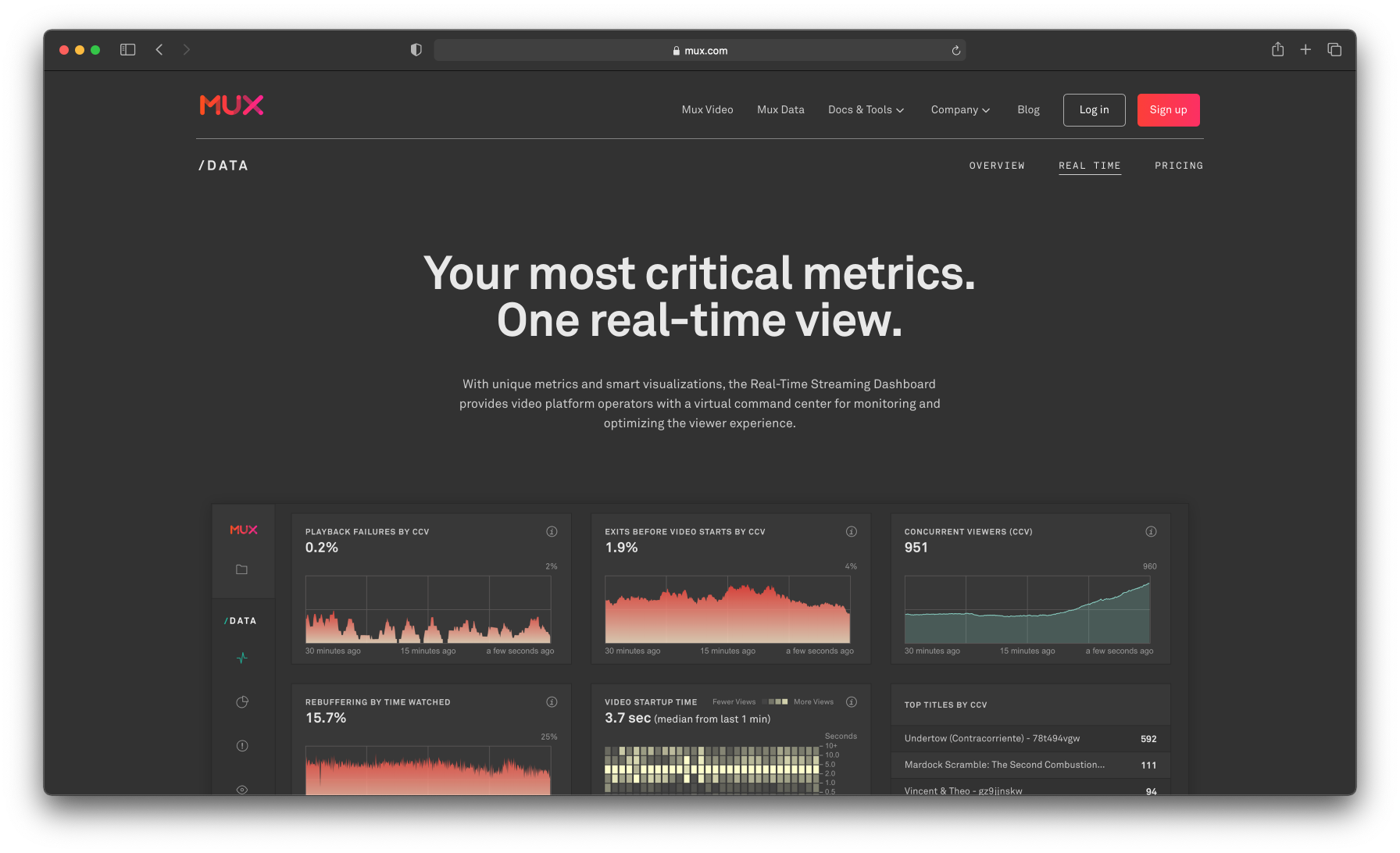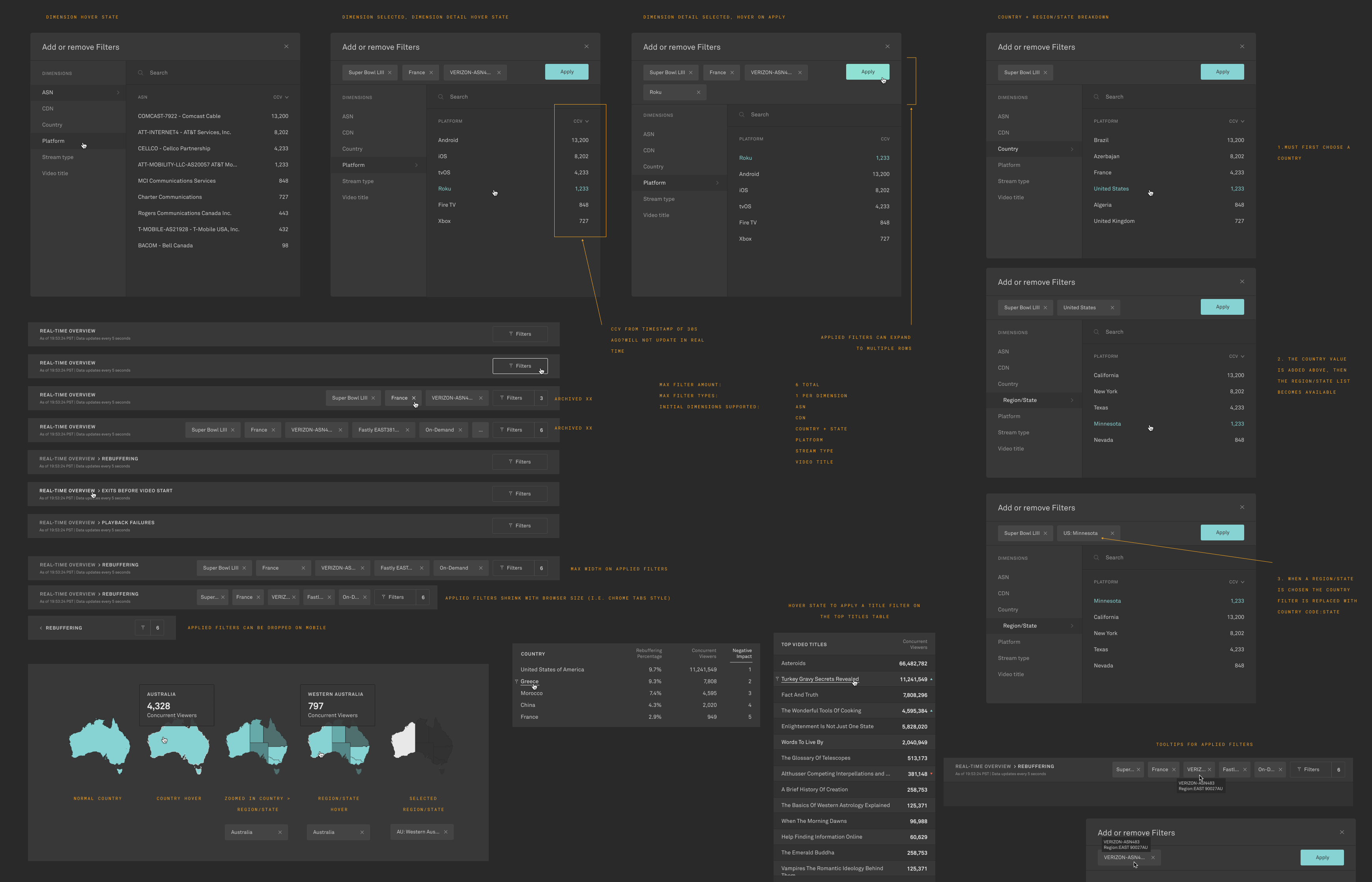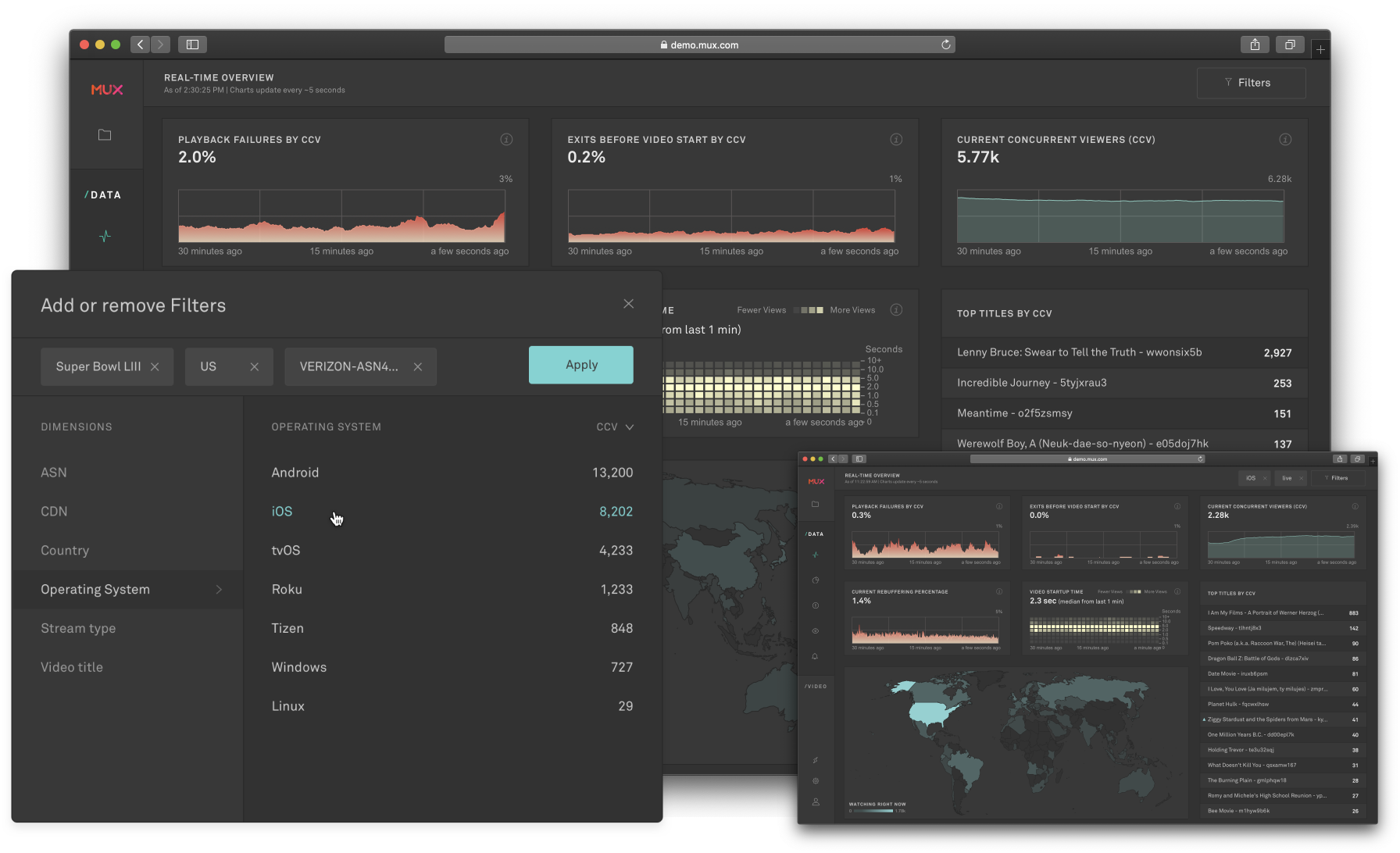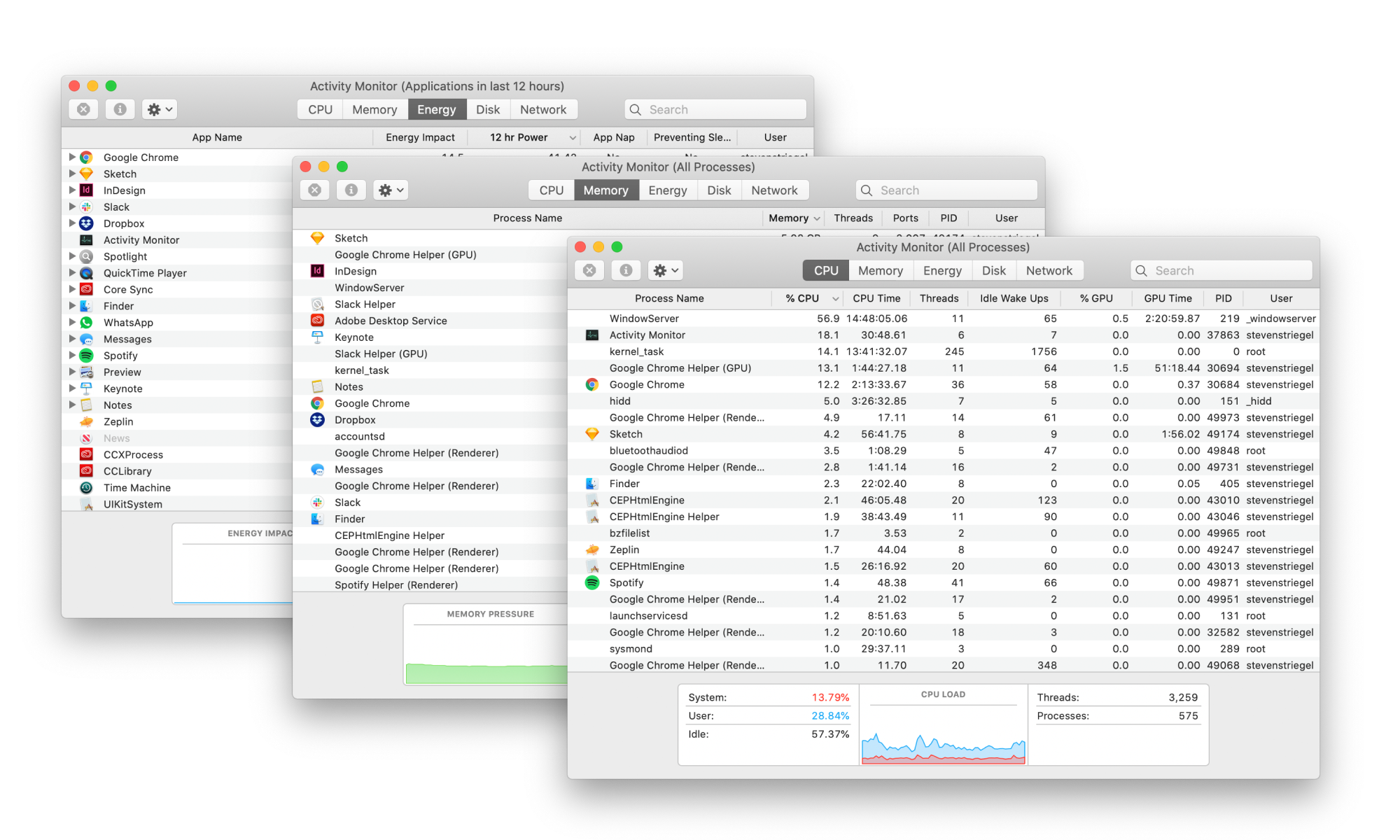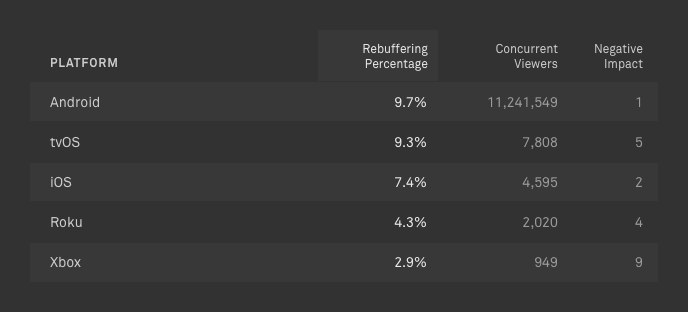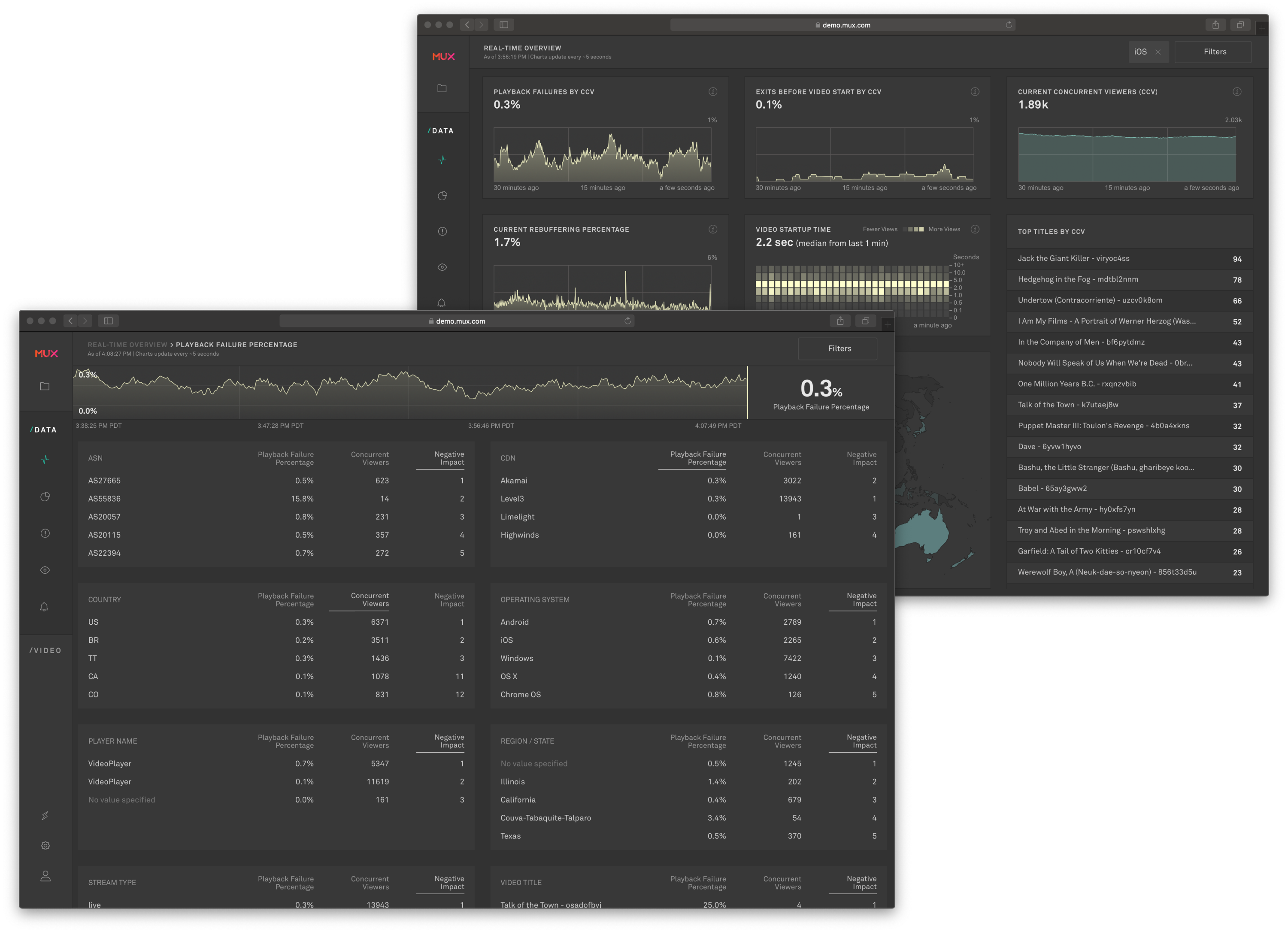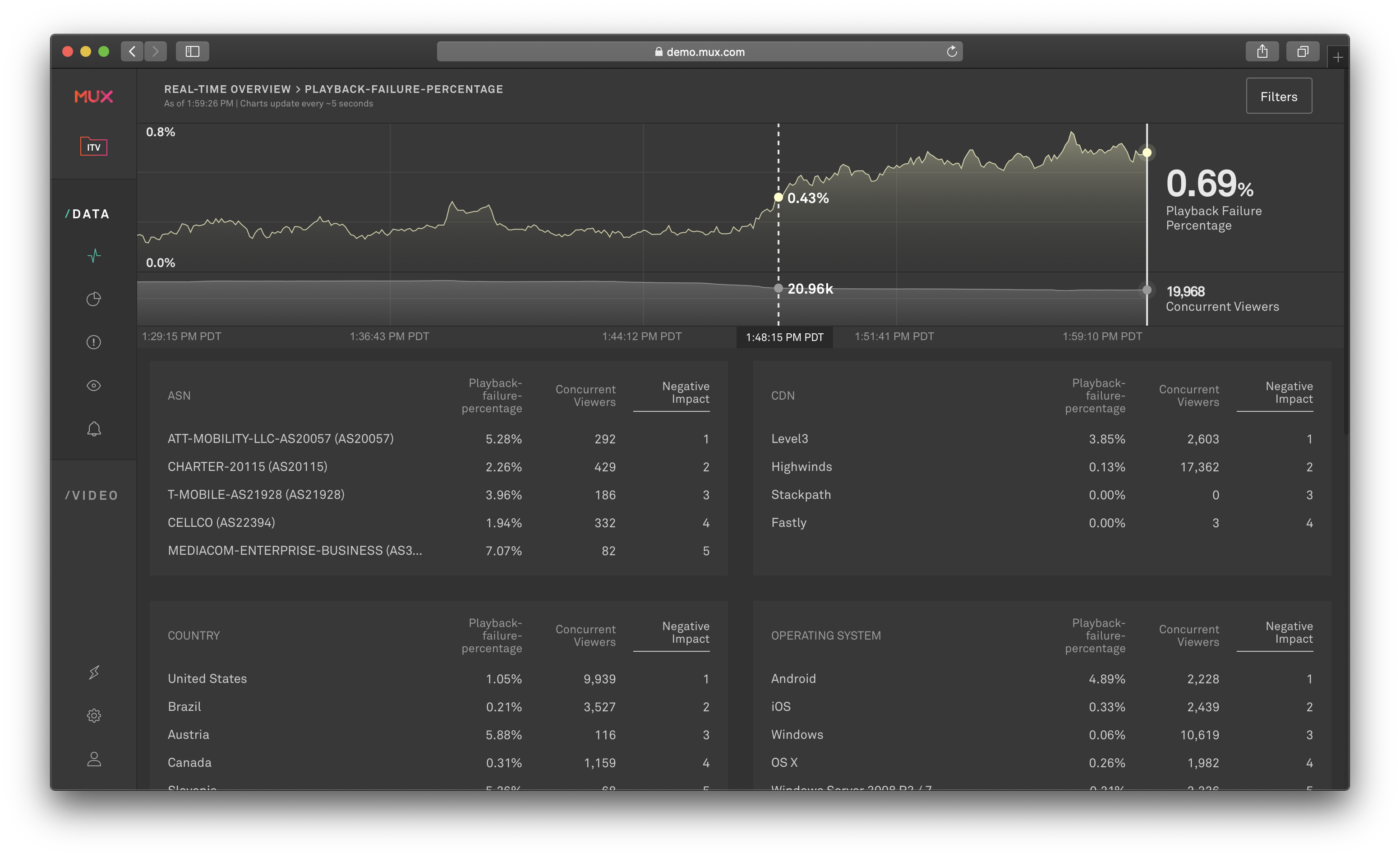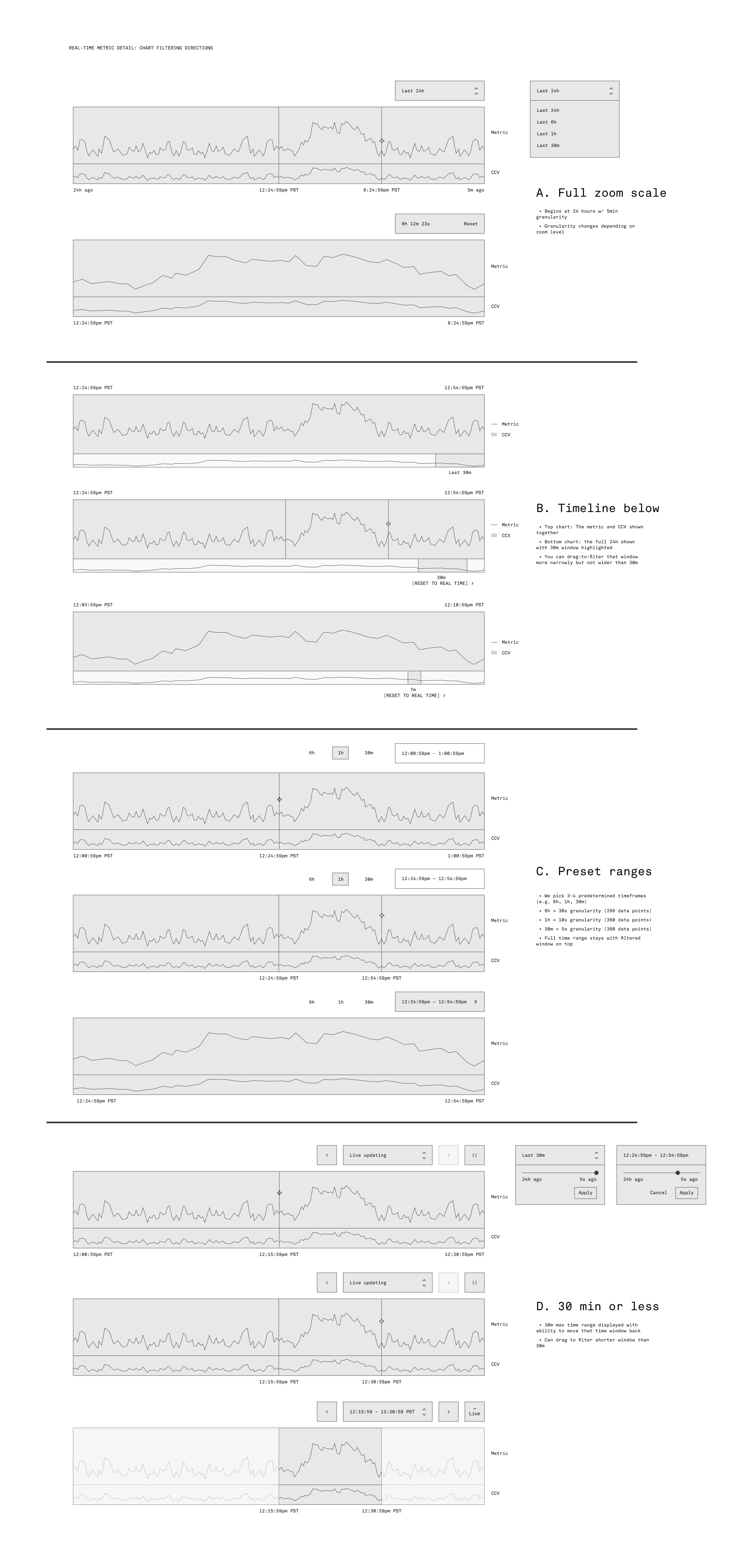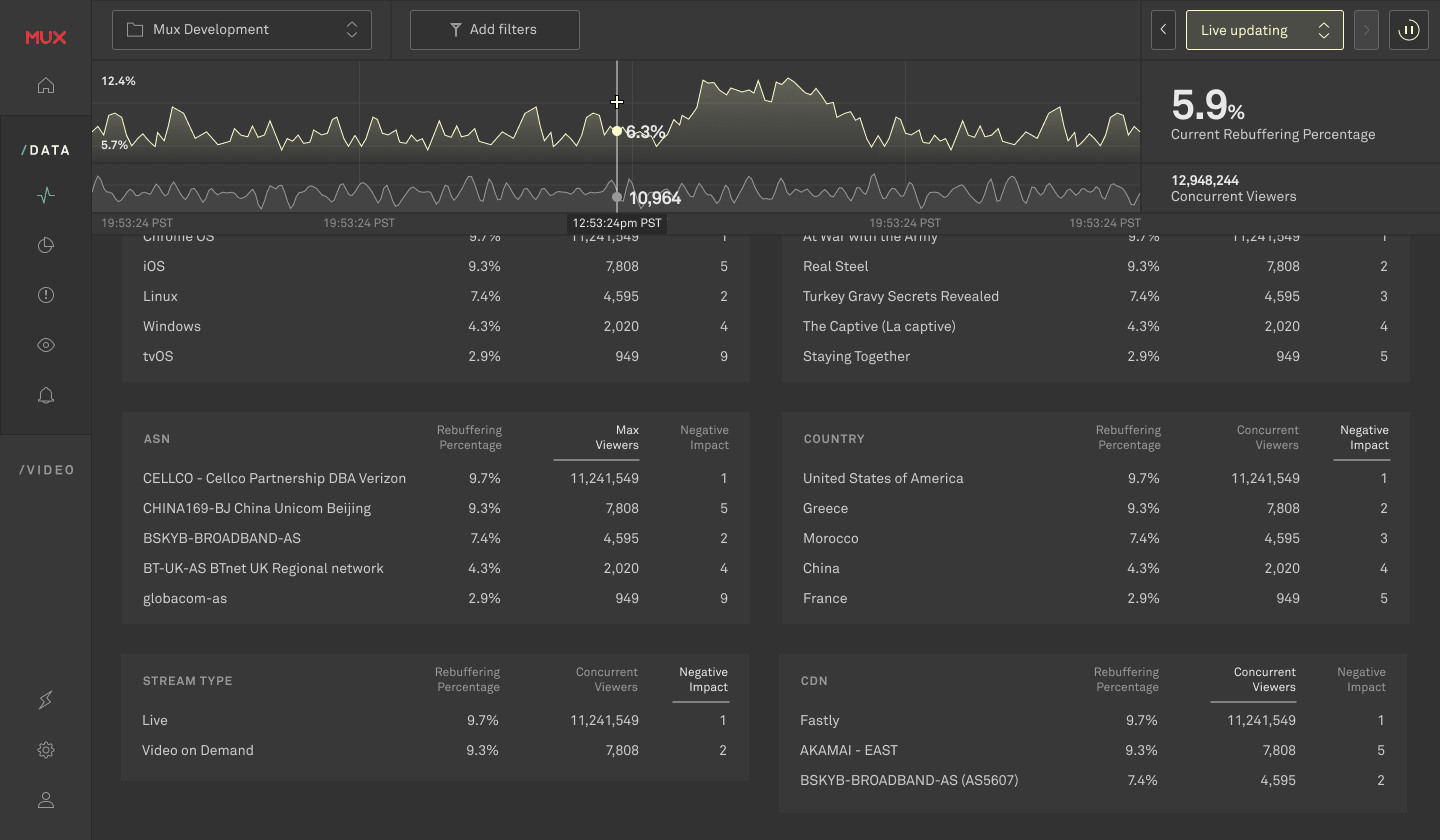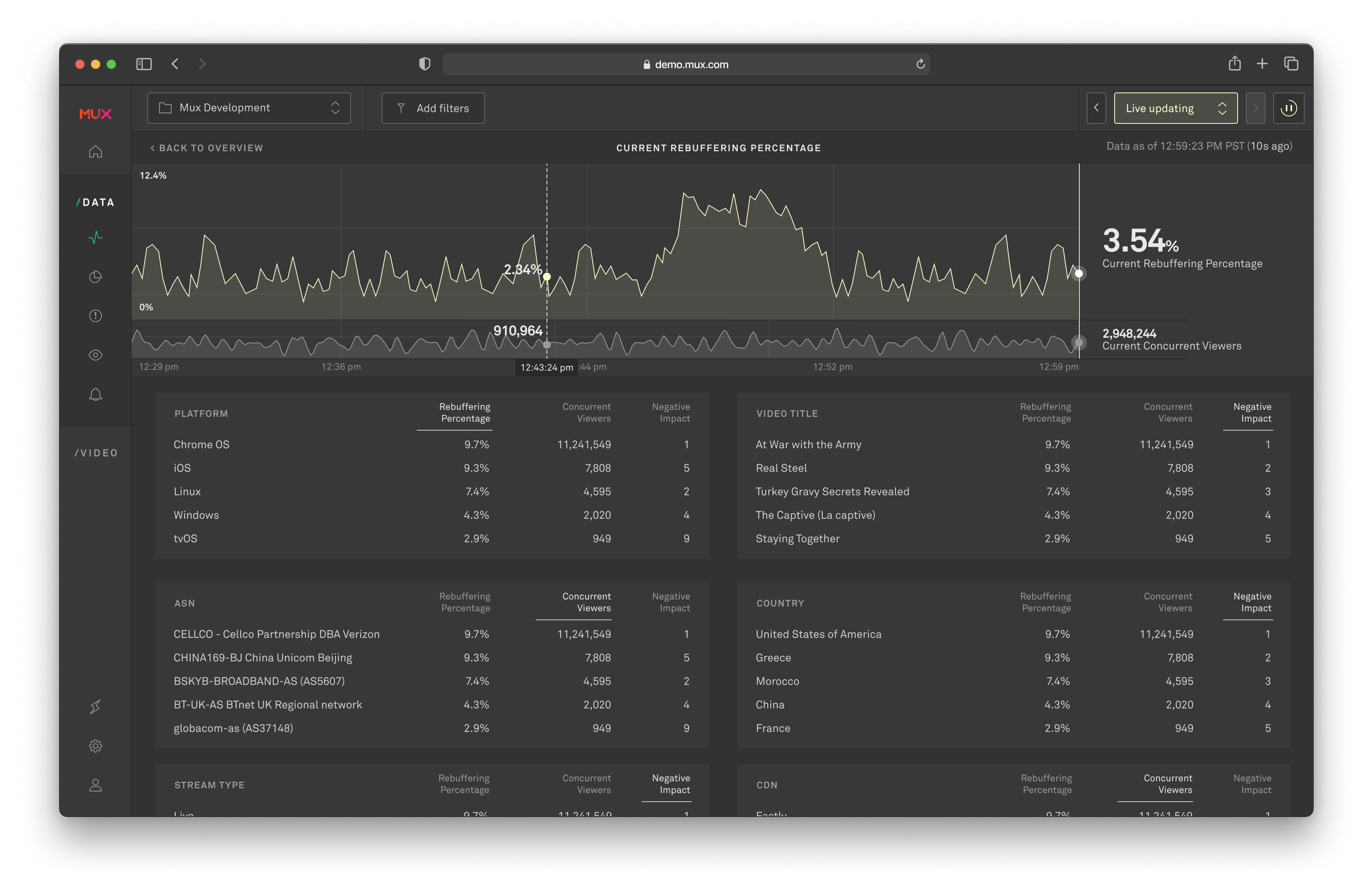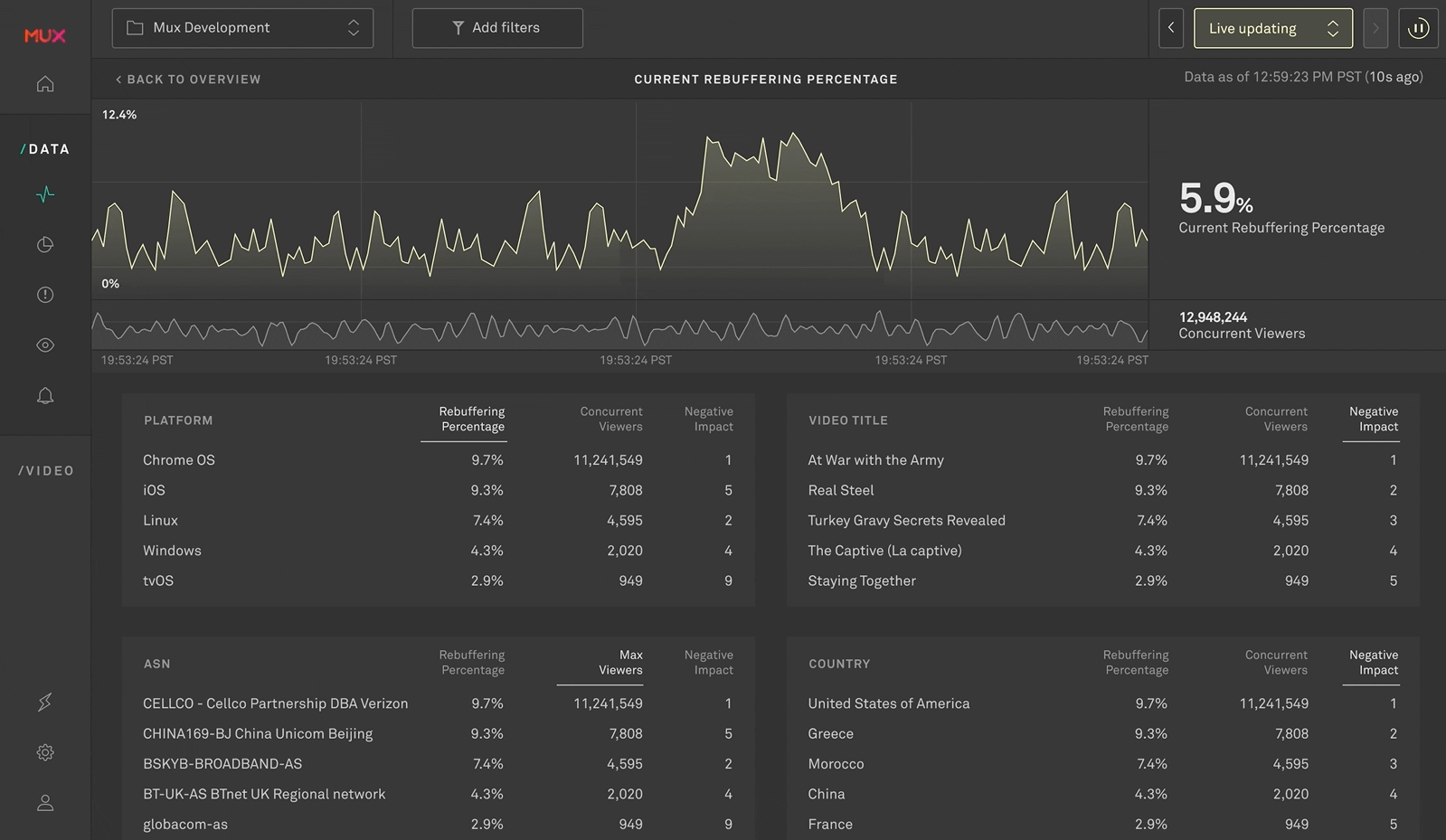Mux Data is an analytics platform for video performance that helps video teams understand the quality of experience they're delivering to their customers. Metrics include things like buffering, initial loading times, playback issues, etc.
For the past year we had been talking with our customers about bringing real-time data to our analytics product. This involved phone calls, video chats, and on-site visits with customers all over the world with varying types of video platforms. Our two target customers were large media companies running big online events and live streaming software companies.

